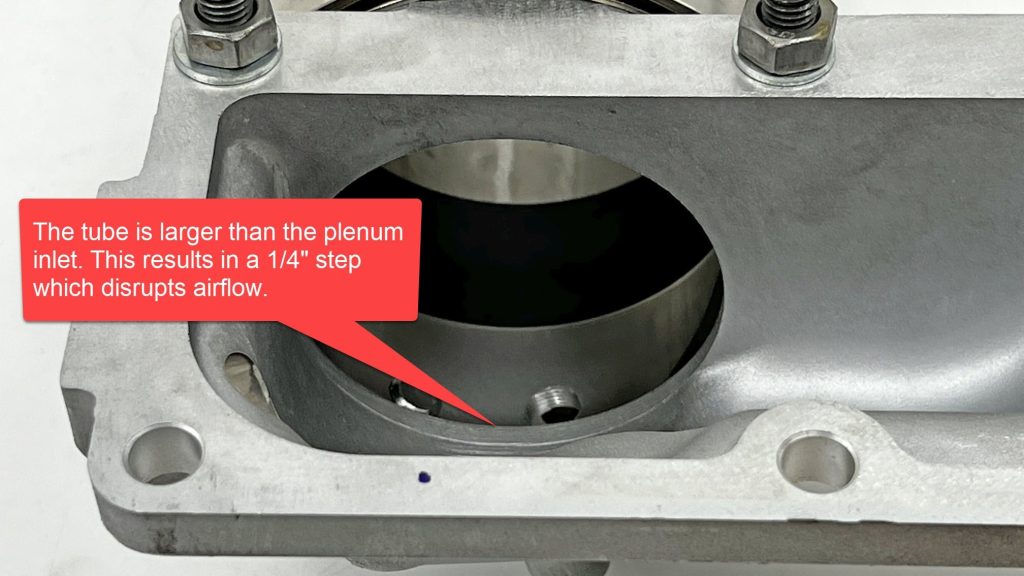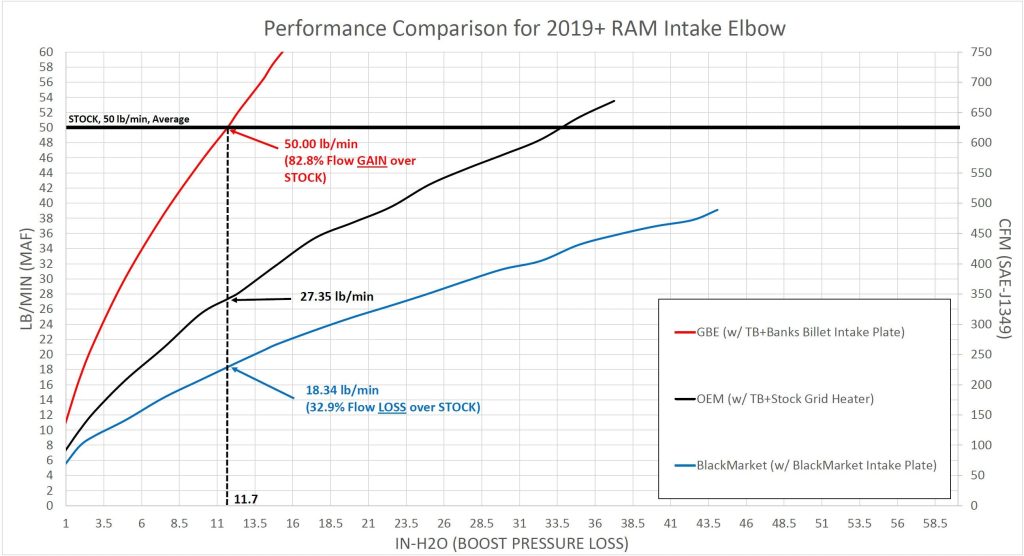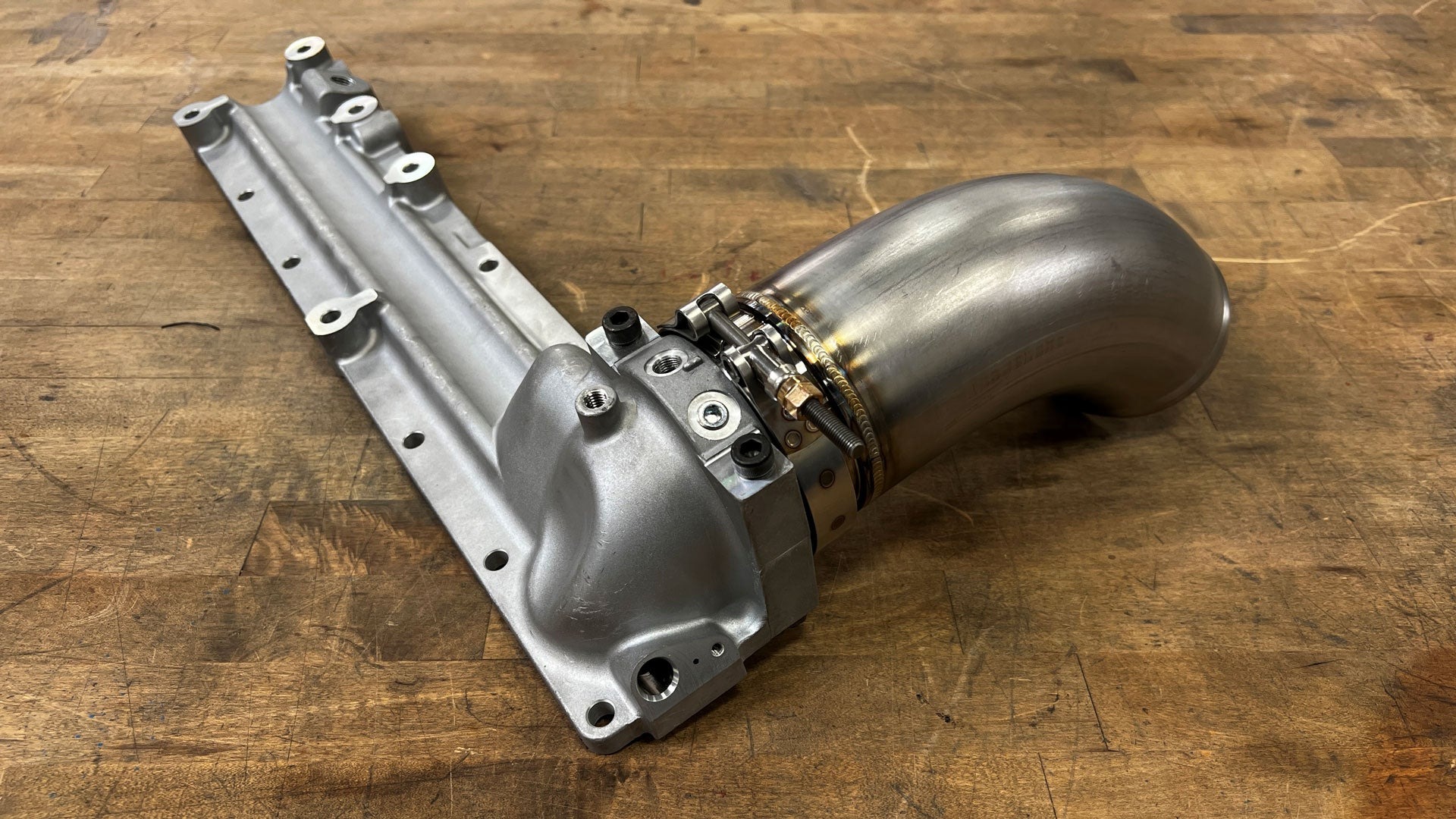Any time a factory truck part earns a reputation for failing, the aftermarket swoops in with solutions; it’s how they make their money. Whether it’s the age-old VP44 injection pump problem on a 5.9-liter Cummins that’s fixed by a FASS lift pump or an LML Duramax CP4 to CP3 conversion by Fleece Performance, the goal is to address a flawed stock design while improving performance. However, not every aftermarket “upgrade” fits the latter part of that description, and Black Market Performance’s Open Air Grid Plenum for the 6.7L Cummins is proof.
It’s true that the BMP hardware deletes the diesel engine’s faulty factory grid heater located inside the intake elbow. That’s a big reason why a RAM owner would choose this kit. Though after seeing how it performs on the flow bench, I have to say that’s the only reason to choose BMP’s offering because it actually loses horsepower versus stock. It isn’t a small drop, either, as BMP’s restrictive intake elbow flows 32.9% less than the original Cummins design.
I learned this from a quick one-minute video on Banks Power’s YouTube channel. Check it here:
Obviously, this clip was made by a BMP competitor looking to make money by selling its own parts instead. It’s not like Banks is unbiased in terms of whose intake elbow it thinks is best. But it’s hard to argue with the results when you see the gains that are possible with the Monster-Ram, while the BMP kit struggles to come close to the stock part.
There’s a key reason for the BMP kit’s shortcomings: The intake plenum wasn’t designed for trucks in the first place. While the 3.5-inch V-Band Charge Pipe is custom-designed for this application, the plenum wears Cummins part number 4930917. That reveals its origins in the world of constant-duty Cummins QSB engines, like the ones found in commercial generators.
Whereas the 6.7L Cummins in 2007.5-2024 RAM HDs make anywhere from 350 to 370 hp in stock form, these industrial engines only need to make between 130 and 275 hp. Their intakes don’t need to flow as much air because of that.

In addition to the commercial-engine plenum cover plate, the bent tubing isn’t doing performance any favors. Its diameter is larger than the plenum inlet, resulting in a harsh quarter-inch step that disrupts airflow. That means the intake air has to make a 90-degree turn and dump in through this uneven mating. It’s no wonder the part can’t flow the same type of air mass as stock.
Finally, and maybe most importantly, this can have a big negative impact on an engine’s turbocharger. Because the turbo has a target boost pressure to hit, as set by the ECU, it will work that much harder to achieve its number. Installing the BMP kit essentially puts an obstacle in your turbo’s path to achieve its goal. That’s obviously frustrating if you’ve already installed a larger turbo for better performance, but it’s arguably more egregious if you’ve made the decision to leave your truck as close to stock as possible for reliability reasons.

All in all, the BMP kit does the job of removing the fatally flawed grid heater that can drop a nut or bolt into the 6.7L Cummins engine, but it’s an enemy of performance. I can understand spending $350 on preventative maintenance, but dropping cash to make it slower? That’s a much harder sell. It’s a classic example of doing something you could without wondering if you should.

